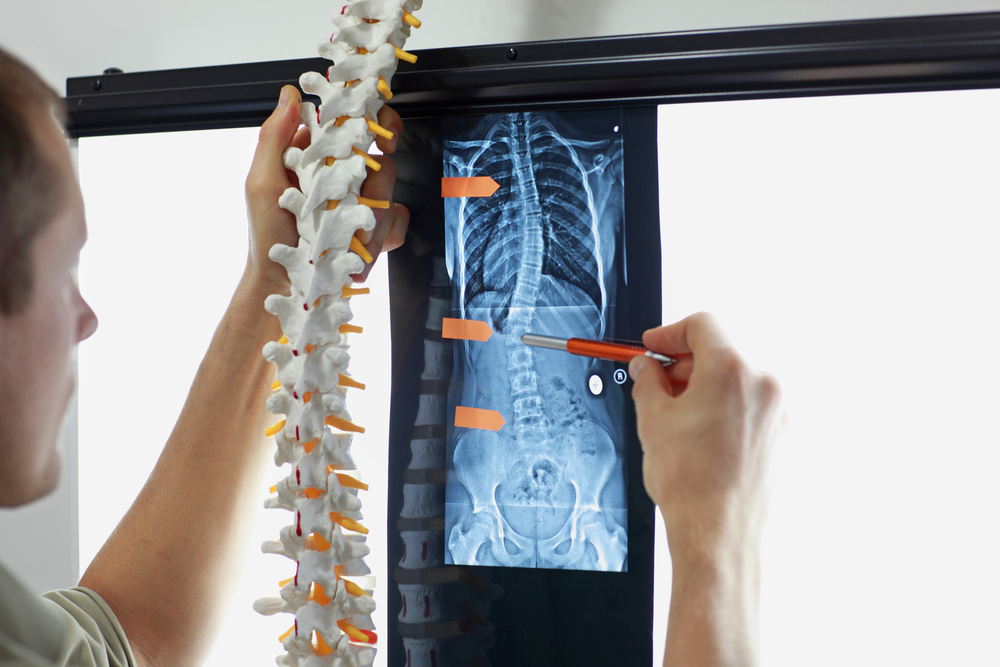Symptoms, Causes And Treatment Options For Bulging Disc

Symptoms, causes and treatment options for bulging disc
Bulging disc or disc protrusion is a common occurrence, and almost 90% of bulging disc occurs in the lumbar area of the spine. It occurs when the weakened disc swells and protrudes through an opening in the spine. As the disc moves out of its original position, which is a slow process over a period of time, bulging disc condition surfaces. There is a liquid-like nucleus inside the disc.
Most often, bulging disc treatment is delayed as most cases do not reveal any symptoms. The symptoms manifest when the bulging disc pinches a nerve. This results in severe and chronic pain which affects the movement of the back.
Causes of bulging disc
- Advancing age
Many degenerative health conditions crop up as a person ages. As you age, the spinal discs suffer a structural alteration and also their water content decreases. The net result is the increased vulnerability to suffering from a bulging disc plus other complications as well. - Injury/Trauma
When there is a serious injury, the immediate effect is a herniated disc. On the other hand, a disc bulge happens slowly over a period of time. At times, a major accident that adversely affects the spinal system can lead to bulging disc. - Wear and tear
Your spine offers support from birth and continues to do so. As you sit, bend, jump, and stretch during your lifetime, the spinal column, with its discs and vertebrae, is subjected to wear and tear. When they are excessively strained, or the distribution of weight around the spine alters, there is every chance of suffering from bulging disc. - Improper posture
The right posture is the key to a healthy spine. Unfortunately, many of us adopt a bad posture while sitting, sleeping, and standing. As a result, the neck and back is strained which further culminates in bulging disc. - Occupational hazards
If your daily routine as part of your job, requires long hours of standing, bending, lifting heavy objects, or driving, you run the risk of developing bulging disc. Carrying very heavy objects in the incorrect manner can also lead to a swollen disc.
In addition to the above causes, obesity, participants in contact sports, and those who have a family history of disc disease are susceptible to bulging disc. Any other activity that places stress on the spine can cause bulging disc.
Symptoms of bulging disc
The symptoms evidencing a bulging disc is not very apparent. The occurrence of some symptoms can point towards the bulging disc condition. Listed below are some of the indicators
- Pain or a tingling sensation in the neck, arms, hands, shoulders, and finger can indicate a bulging disc in the cervical spine area
- Pain in the upper back, which moves to the chest and stomach, indicates a bulging disc in the thoracic region.
- Lower back pain and muscle spasms are indicative of a bulging disc in the lumbar spine. A large chunk of the body weight rests on the lower back. So the chances of developing a bulging disc in the lumbar area are very high. If the protruding disc presses the sciatic nerve, it can result in sciatica, where there is pain that shoots down one leg. If the bulging disc is compressing the cauda equina nerve bundle, it causes loss of bladder control, necessitating emergency medical aid.
Non-surgical treatment options for bulging disc
Once the underlying cause for the bulging disc is identified and location pinpointed through imaging techniques, conservative treatment helps with pain relief. Bulging disc treatment includes OTC anti-inflammatory medicines, heat pads, ice packs, professional massage, physical therapy, and lifestyle changes. These measures are effective to reduce and also in some cases, completely eliminate the pain.
Bulging Disc Treatment – Minimally Invasive Surgery
In the past, spinal surgery was the only option. There was a high surgical risk involved, plus a long recovery period. It also entailed heavy expenditure. Advancement in medical technology has enabled correcting bulging disc through minimally invasive surgery.
The USP of minimally invasive surgery is faster recovery. It reduces blood loss, scarring, and trauma. This type of surgery is needed only when the bulging disc is in a sensitive location or is on the brink of herniation.
Prevention of bulging disc
Bulging disc treatment options do offer a wonder cure to alleviate the pain. But isn’t it better to prevent the condition, rather than look for a cure? While age-related degeneration cannot be avoided, preventable causes like maintaining healthy body weight and correct posture can help to prevent bulging disc.
- Lifestyle changes go a long way in preventing bulging disc.
- Regular exercise will strengthen the back muscles and ensure flexibility. The discs and the vertebrae will be able to support the body weight as well as the various body movements.
- Nicotine from your cigarettes hinders the nutrient absorption by the spinal discs, resulting in their weakening and leading to a protruding disc. Smoking leads to various other diseases and conditions. One needs to quit smoking
- Manage your body weight. An ideal body weight causes less strain on the spine

